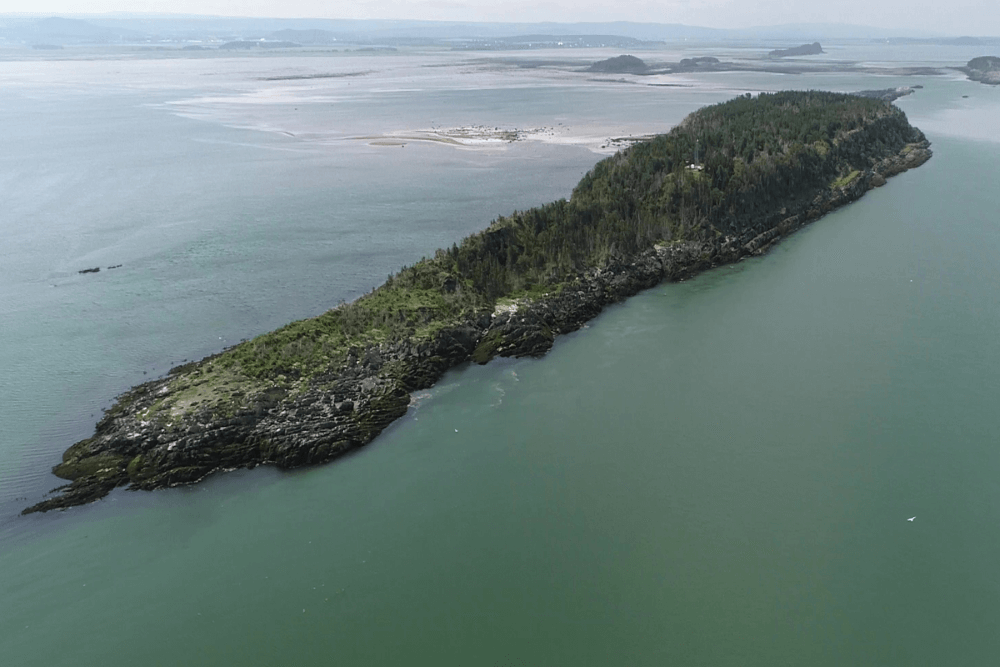By Jaclyn Aubin
This summer, I was lucky enough to pass two weeks on the Grande-Île de Kamouraska, accompanied by my two intrepid colleagues, Dr. Valeria Vergara and Marie-Ana Mikus. We were collecting data for several projects, including my own doctoral thesis. My doctoral project, co-supervised by Dr. Vergara and Dr. Dan Mennill of the University of Windsor, aims to improve our understanding of the social structure of the Saint Lawrence beluga population.
The GREMM’s photo-identification program suggests that belugas tend to return to the same areas summer after summer. Indeed, many catalogued individuals return to the Saguenay each summer, while others seem to prefer the South Shore or the upstream area near the Kamouraska islands. These patterns of space use suggest that the population could be composed of several distinct beluga “communities”.
A contact call as a vocal signature
As part of my doctoral project, I hope to increase our understanding of these patterns of space use by adding an acoustic dimension to our analyses. Such acoustic analyses of space use are possible thanks to the distinctive “contact calls” used by belugas. Belugas use these contact calls to (you guessed it!) stay in contact with each other in the murky waters of the Saint Lawrence. Previous findings from Dr. Vergara and other researchers strongly suggest that beluga contact calls are unique to individuals, or small family groups, similar to our own first or last names. Therefore, if we hear the same contact calls in the same area for several days in a row, we know that the same individual, or that the members of the same small family groups, were present each day.
To record contact calls, we placed three hydrophones in the belugas’ summer range: one in Baie Sainte-Marguerite, one in Cacouna, and one off the shore of the Grande-Île of Kamouraska. Our hypothesis: each site would have a unique repertoire of contact calls, suggesting that each site is home to a distinct beluga community.
However, it was not sufficient to blindly record the belugas. To determine the size and composition of the groups being recorded, and to verify that our acoustic data agreed with data from photo-identification, we needed some boots on the ground. Therefore, my colleagues and I had the privilege of passing several weeks camped out on the Grande-Île. During our stay, we obtained drone footage of the belugas, photographed them for identification purposes, and took detailed herd scans of the animals in the area.
The daily life of belugas
We were unsure whether the belugas would pass close enough to the island to be photographed, so we were pleasantly surprised to see belugas passing near the rocks every day! Very often, small groups of belugas would swim along the side of the island with the current, only to then turn around, swim up the current, and repeat the same trajectory. It was like having a long line-up of belugas, each ready for its close-up!
In reality, the belugas were quite occupied with their daily activities. We often had the impression that the belugas were foraging: they often showed deep diving, arching their backs, and showing their flukes. One day, while flying the drone, Marie-Ana was lucky enough to see a group of belugas in hot pursuit of a school of fish! It seems that the Grande-Île might be an important feeding ground for belugas.
We also had the pleasure of seeing many mothers with very young calves. Unfortunately for us, many of these mothers had perfectly smooth white flanks, with no scars or marks, and will therefore be quite difficult to photo-identify. We are hoping that these females produced some lovely contact calls during their visit and will therefore be easier to identify acoustically!
It is with a heavy heart that I finally wrapped up my time on the island. The enormous quantity of data that we collected will certainly keep me occupied until the next field season. I would like to thank Marie-Ana Mikus, Charlène Dupasquier of the ROMM, and Mathieu Marzelière of the GREMM for continuing data collection following my departure, and all my colleagues at the GREMM and the ROMM who made this amazing field season possible. I am already looking forward to the 2022 field season!







